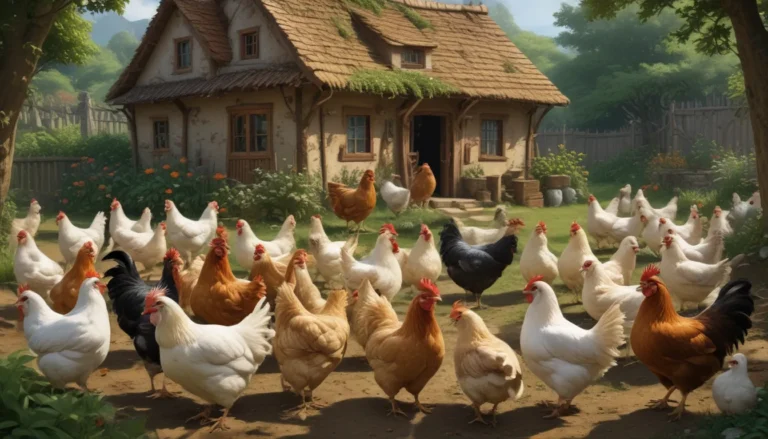Essential Guide to Fast-Growing Shade Trees for Your Landscape

Trees do so much more than simply offer shade. They create miniature ecosystems, define landscapes, and provide cleaner air. Being surrounded by tall trees has many psychological benefits, making them a wonderful addition to any yard. Apart from offering shade, trees also provide protection from elements like rain and wind. So, it’s essential to have some tall shade providers in your yard to enjoy the outdoors comfortably.
Let’s explore some of the best fast-growing shade trees that you can plant in your yard. These trees not only grow quickly but also provide ample shade, making them perfect additions to any landscape.
Before You Plant: Survey Your Site
Before choosing a tree to plant, it’s crucial to consider your yard’s specific conditions. Here are some things to keep in mind when selecting a location for your new shade tree:
- Be mindful of areas with excess water or utility lines.
- Consider the eventual size of the tree to avoid issues with structures like houses and power lines.
- Choose a location that receives adequate sunlight, especially if you’re looking to maximize shade in your yard.
It’s essential to think long-term when selecting the right spot for your new shade tree to avoid any issues down the road.
The Best Contestants for Fast-Growing Shade Trees
- River or Paper Birch
- USDA Zones: River birch (4-9), Paper birch (2-7)
- Growth Per Year: 13” to 24”
-
Notes: Be cautious with these fast-growing trees, as their catkins can cause damage to cars. Opt for well-drained soil and apply preventive measures for common birch pests.
-
Tulip Poplar
- USDA Zones: 4-9
- Growth Per Year: 24” or more
-
Notes: Tulip poplars require space to spread out and grow freely, producing debris that needs regular cleanup.
-
Dawn Redwood
- USDA Zones: 5-8
- Growth Per Year: 24” or more
-
Notes: Dawn redwoods require minimal maintenance and lose their needles in winter. They prefer moist conditions and ample sunlight for optimal growth.
-
Bald Cypress
- USDA Zones: 4-10
- Growth Per Year: 13” to 24”
-
Notes: Ideal for wet areas, bald cypress is a low-maintenance tree that thrives in various conditions. It’s a popular choice for areas prone to excess moisture.
-
Weeping Willow
- USDA Zones: 6-8
- Growth Per Year: 24” or more
-
Notes: Weeping willows produce a lot of debris and require consistent maintenance to prevent issues like fungal infections.
-
Pecan
- USDA Zones: 6-9
- Growth Per Year: 13” to 24”
-
Notes: Pecan trees yield delicious nuts but have large taproots, making them challenging to transplant. They require ample space and specific soil conditions for healthy growth.
-
Paulownia
- USDA Zones: 6-9
- Growth Per Year: 24” or more
-
Notes: Paulownia trees are fast-growing but prone to weak wood, root issues, and cold sensitivity. Check local regulations for potential invasiveness.
-
Southern Live Oak
- USDA Zones: 7-10
- Growth Per Year: 13” to 24”
-
Notes: Southern live oaks adapt well to various soil conditions, offering excellent shade and wind resistance. They are ideal for street planting and ornamental use.
-
American Sycamore
- USDA Zones: 4-9
- Growth Per Year: 13” to 24”
-
Notes: American sycamores require maintenance due to shedding bark and branches. They are prone to specific diseases but can be managed through proper care.
-
Quaking Aspen
- USDA Zones: 1-7
- Growth Per Year: 24” or more
- Notes: Quaking aspens grow in colonies and provide an excellent shade screen. They require space to spread and can attract pests and diseases.
-
Eastern White Pine
- USDA Zones: 3-8
- Growth Per Year: 24” or more
- Notes: White pines prefer moist environments and offer natural mulch with shedding needles. They are susceptible to specific diseases but attract a variety of wildlife.
-
Chilean Mesquite
- USDA Zones: 8-11
- Growth Per Year: Up to 12”
- Notes: Mesquites offer dense shade in hot climates but can produce a lot of leaf debris. They thrive in desert heat and are ideal for arid landscapes.
After Planting: Care Tips for Your Shade Trees
Once you’ve planted your new shade tree, it’s crucial to provide proper care to ensure its healthy growth. Remember to:
- Water your tree regularly, especially during hot and dry periods.
- Fertilize your tree in the springtime with slow-release fertilizers.
- Monitor for signs of pests, diseases, and issues like dehydration or weakening wood.
By following these care tips, you can ensure that your fast-growing shade tree thrives and provides much-needed shade in your landscape.
Conclusion: Enjoy Your New Shade
Planting fast-growing shade trees in your yard can transform your outdoor space by providing cooling shade and enhancing the beauty of your landscape. Whether you choose river birch, tulip poplar, or another shade tree, make sure to consider your site conditions and provide proper care for optimal growth. With a little effort and attention, you can enjoy the benefits of lush shade trees in your yard for years to come.





